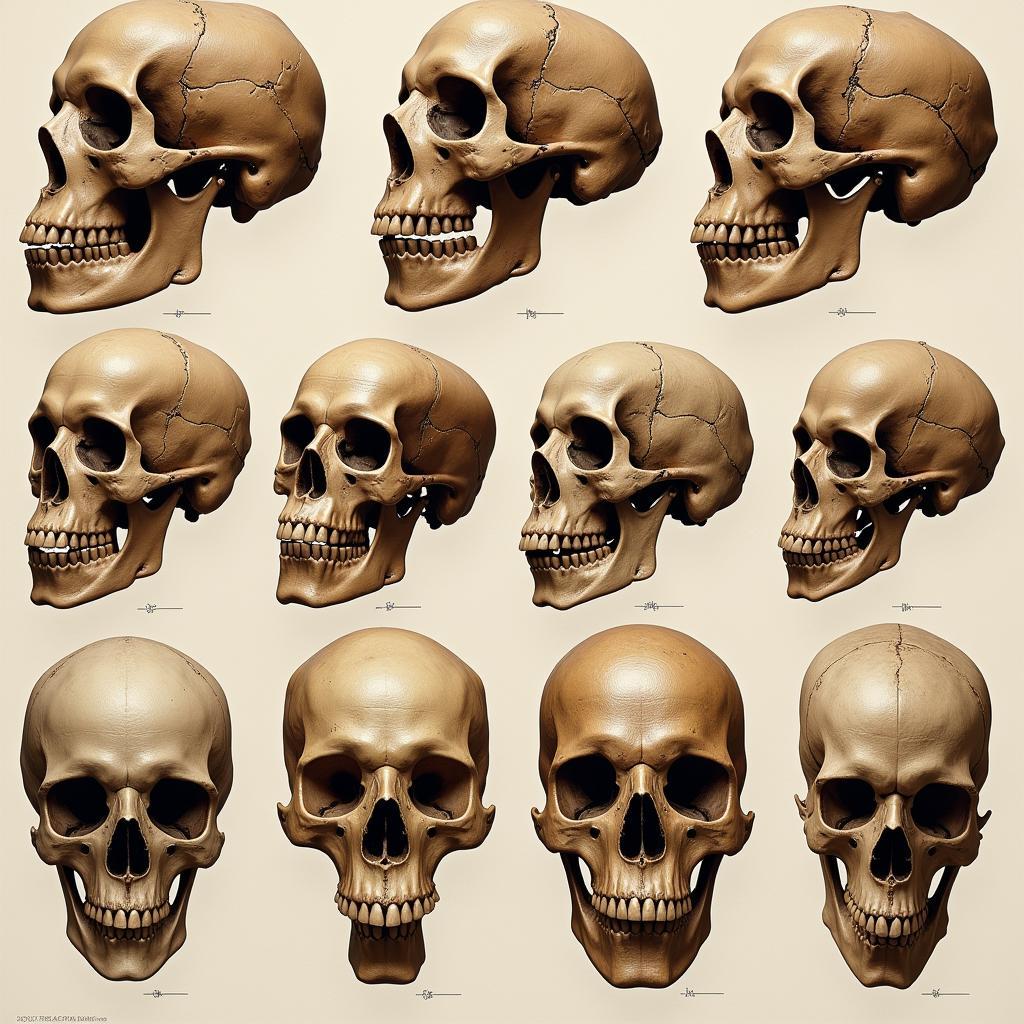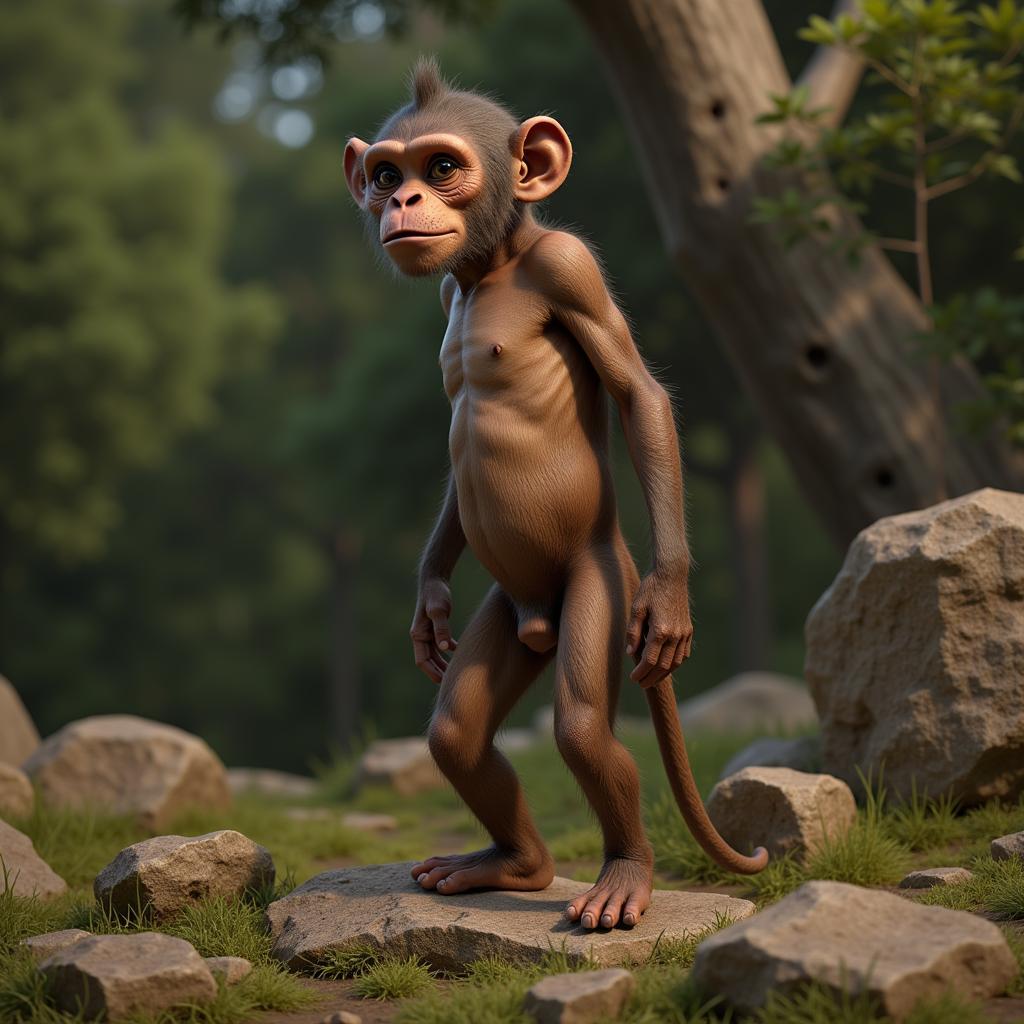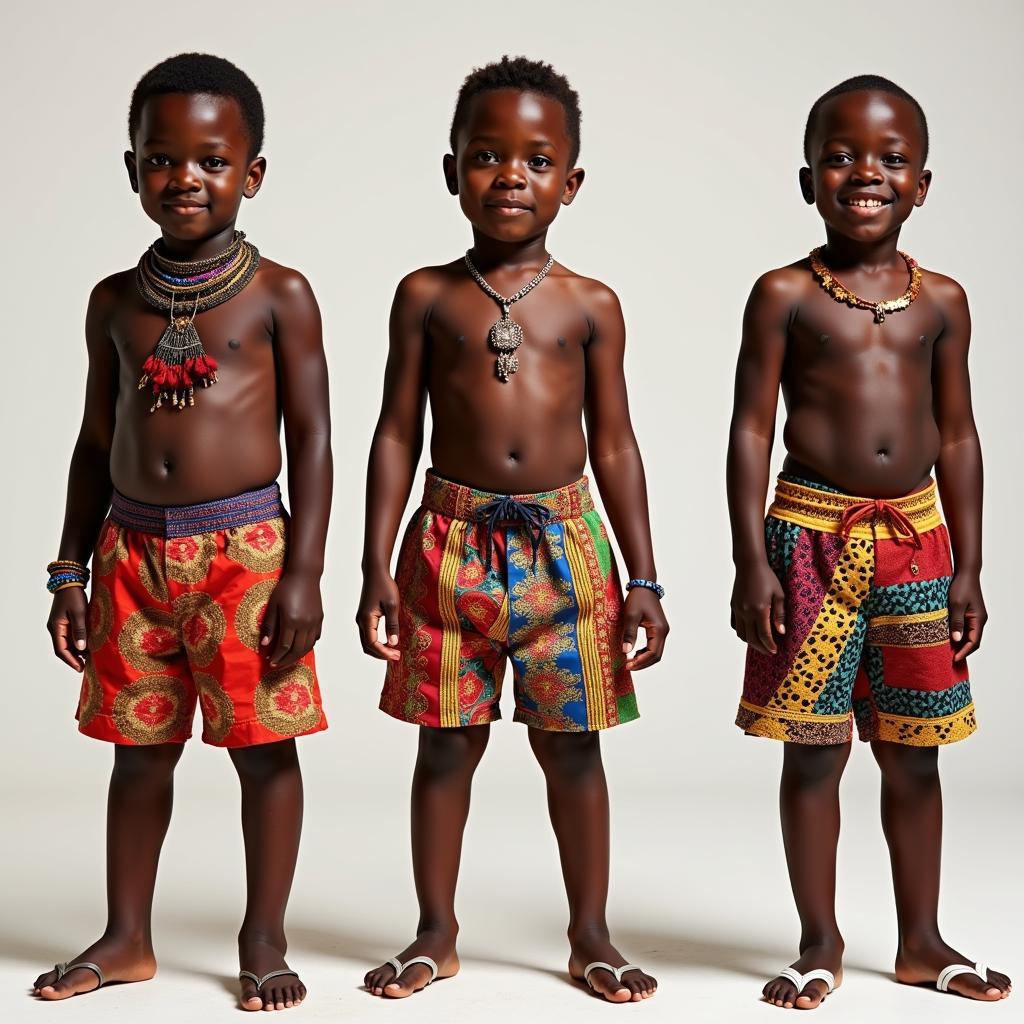African Human Fossils Characteristics
The discovery of ancient human fossils in Africa has been instrumental in understanding the origins and evolution of our species. These “African Human Fossils Characteristics” provide a fascinating glimpse into our distant past, revealing key stages in our journey from early hominins to modern humans. This article delves into the defining characteristics of significant African human fossils and their implications for our understanding of human evolution.
 Comparison of African Human Fossil Skulls
Comparison of African Human Fossil Skulls
Uncovering the Cradle of Humankind: Significance of African Fossils
Africa is dubbed the “Cradle of Humankind” for a reason. The continent holds the oldest and most diverse collection of human ancestor fossils, spanning millions of years. Studying the characteristics of these fossils allows us to trace the emergence of distinct human traits like bipedalism, tool use, and increased brain size.
 Artistic Reconstruction of Australopithecus Afarensis
Artistic Reconstruction of Australopithecus Afarensis
Key Characteristics and Evolutionary Significance
Examining specific traits helps us understand the significance of African human fossils in the bigger picture of human evolution:
Bipedalism: Walking the Walk
One of the earliest defining characteristics observed in African human fossils is bipedalism, the ability to walk upright on two legs. Fossils like african ape man and Australopithecus afarensis (famously known as “Lucy”) exhibit skeletal adaptations for bipedalism, such as a forward-placed foramen magnum (the hole where the spinal cord connects to the skull) and a basin-shaped pelvis.
Cranial Capacity: The Rise of Intelligence
Over time, African human fossils reveal a trend of increasing cranial capacity, reflecting the development of larger and more complex brains. Homo habilis, for instance, displayed a larger brain size compared to earlier australopithecines, suggesting a leap in cognitive abilities and potentially the beginning of tool use.
Tool Use and Culture: Shaping the World
The presence of tools alongside fossils provides compelling evidence of evolving cognitive capabilities and cultural practices. The Oldowan tools, associated with Homo habilis, represent some of the earliest stone tools crafted by our ancestors.
 Homo Erectus Tools and Fire
Homo Erectus Tools and Fire
Dental Adaptations: Dietary Shifts and Environments
Fossil teeth offer valuable insights into the diets and environments of our ancestors. For example, the robust teeth of Paranthropus boisei, a hominin lineage that co-existed with early Homo species, suggest a diet of tough plant materials, reflecting adaptations to a changing African landscape.
The Ever-Evolving Story: Ongoing Discoveries
The study of African human fossils is an ongoing endeavor, with new discoveries constantly reshaping our understanding of human evolution. The recent discovery of Homo naledi in South Africa, a species with a surprising mix of primitive and modern features, highlights the complexity and intrigue surrounding our evolutionary journey.
Conclusion
African human fossils, with their unique characteristics and evolutionary tales, are crucial to comprehending our deep past. As we continue to unearth more about these ancient ancestors, we gain a clearer picture of our shared heritage and the remarkable journey of humankind. The “African human fossils characteristics” serve as a testament to the ingenuity, resilience, and adaptability of our species, reminding us of our humble beginnings in the heart of Africa.

